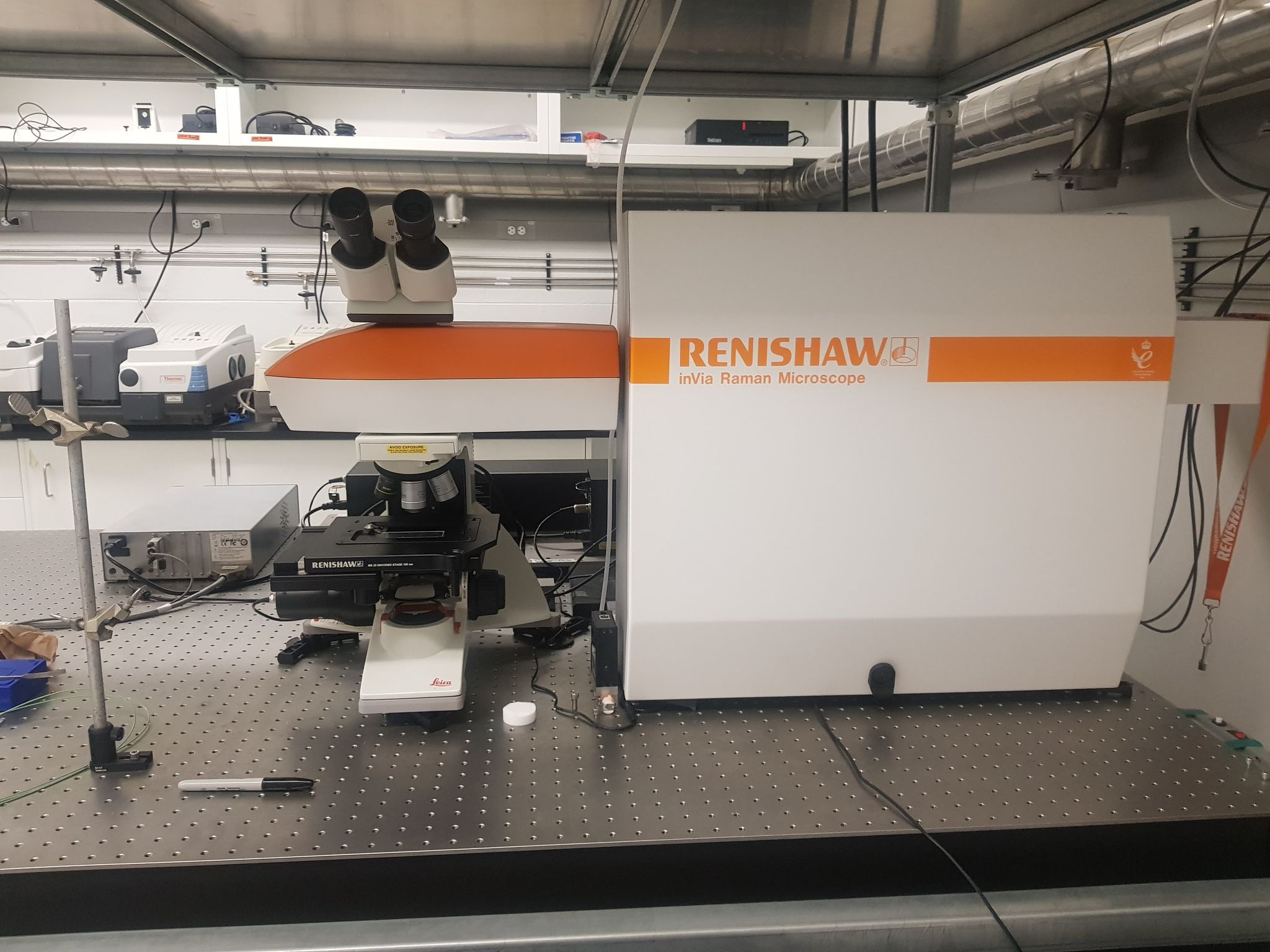By Úna Hogan, Department of Chemistry, University of Waterloo

Image: Raman Spectrometry machine at University of Waterloo
Microplastics are small plastic particles that are less than 5 mm in diameter. At this point, they are now ubiquitous in our environment, contaminating freshwater lakes, oceansand even inside the human body.Once in the environment, these particles can be taken up into the biosphere via ingestion by small aquatic organisms, where they bioaccumulate and cause potential damage to ecosystems.
To better understand the migration, accumulation and abundance of microplastics in the environment, we need accurate and fast identification methods to differentiate between different plastic types. Manual identification techniques such as visual identification have high levels of inaccuracy, ranging from 20-70%. Chemical identification techniques are more accurate and efficient at determining the identity of microplastics.
Two of these chemical techniques - Raman spectroscopy and Fourier Transform infrared (FTIR) spectroscopy - are particularly powerful tools that are widely used for microplastics identification. Both techniques utilize the interaction of light with a sample in order to identify the molecular structure
Under the Microplastics Fingerprinting project, the Smith Research Group at the University of Waterloo is attempting to increase the speed and accuracy of microplastics identification by using Raman spectroscopy. We are beginning by compiling a comprehensive database of Raman spectra for a wide range of plastics. This includes industrial-made plastics, commercial plastic products and plastic particles found in the environment. By using this database as a cross-referencing library, researchers can perform rapid analysis of microplastics. Increasing the speed of identification will enable us to process more samples as well as provide additional insights into processes such as UV degradation, thermo-oxidation and environmental weathering.
Raman Spectroscopy
A change in wavelength light scattered by matter, or ‘Raman Scattering’, was discovered in 1928. The Raman scattering effect yields a fingerprint pattern of peaks based on the chemical bonds in a sample. Raman spectroscopy is a non-destructive analytical technique, that can be used on materials of any thickness or aggregation. In the field of microplastics analysis, Raman spectroscopy is considered an effective way to identify unknown plastics.
Sample preparation for Raman spectroscopy is minimal, but there are some challenges. The presence of fluorescence peaks are common for certain plastics, such as polyethylene terephalate. They can also occur when plastics are exposed to environmental degradation such as UV and hydrolysis. This can easily overwhelm a spectra, resulting in it taking much longer to acquire a good quality spectra.
Fourier Transform Infrared (FTIR) spectroscopy
FTIR spectroscopy relies on the sample absorbing certain wavelengths of Infrared (IR) radiation. This is measured by irradiating a sample with a polychromatic IR beam and measuring the intensity of light absorbed. This absorbance data is then converted to a spectrum using a mathematical process known as a Fourier Transform, which converts the data from time-domain to frequency-domain. FTIR is a fast, accurate and non-destructive analytic technique that has been used successfully for the identification of microplastic particles
Sample preparation for FTIR is often more time-consuming and complicated than for Raman spectroscopy. For insoluble solids, sample preparation frequently involves grinding the sample into a fine powder and incorporating it into either KBr pellets or disks. At other times, the powder will be dispersed in Nujol, a liquid parrafin. New approaches, such as Attenuated Total Reflectance (ATR) and Laser Direct Infrared (LDIR) spectroscopy, decrease sample preparation and imaging time, and are becoming popular in microplastics analysis.
Use of FTIR and Raman in microplastics identification
Researchers use both Raman and FTIR spectroscopy in the detection, quantification and identification of microplastics. For samples taken directly from aquatic environments, Raman is often the preferred method, because water will not interfere with the spectra. Raman methods of identification can also detect particles of a much smaller size than FTIR (Raman can detect particles down to 1µm), making them a preferred choice for identifying smaller microplastics, including potentially nanoplastics. Sample preparation is also quicker for Raman spectroscopy than typical FTIR spectroscopy. FTIR spectroscopy, however, does not have the disadvantage of fluorescence, which is common in microplastics that have been environmentally degraded.
While combining the techniques may seem like a feasible way to address the weakness of each tool, it would significantly increase the amount of time and resources it takes to analyze a sample, reducing our ability to comprehensively understand microplastics accumulation across a geographical area.
Because the Microplastics Fingerprinting project is focused on identifying plastics found in the environment, the Smith group is employing Raman spectroscopy over FTIR due to its superior time-efficiency. This is because Raman sample preparation is minimal, spectra can be taken in sub-millisecond times, and it is resistance to water contamination. By attempting to decrease the time a taken to process a spectra, we can increase the speed and accuracy required to identify microplastics particles.